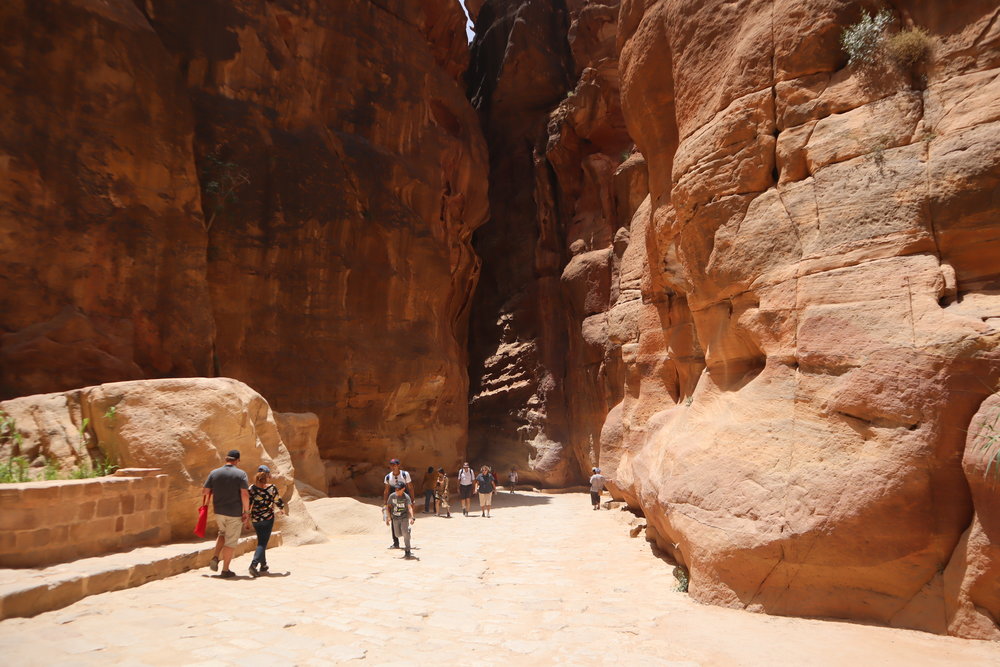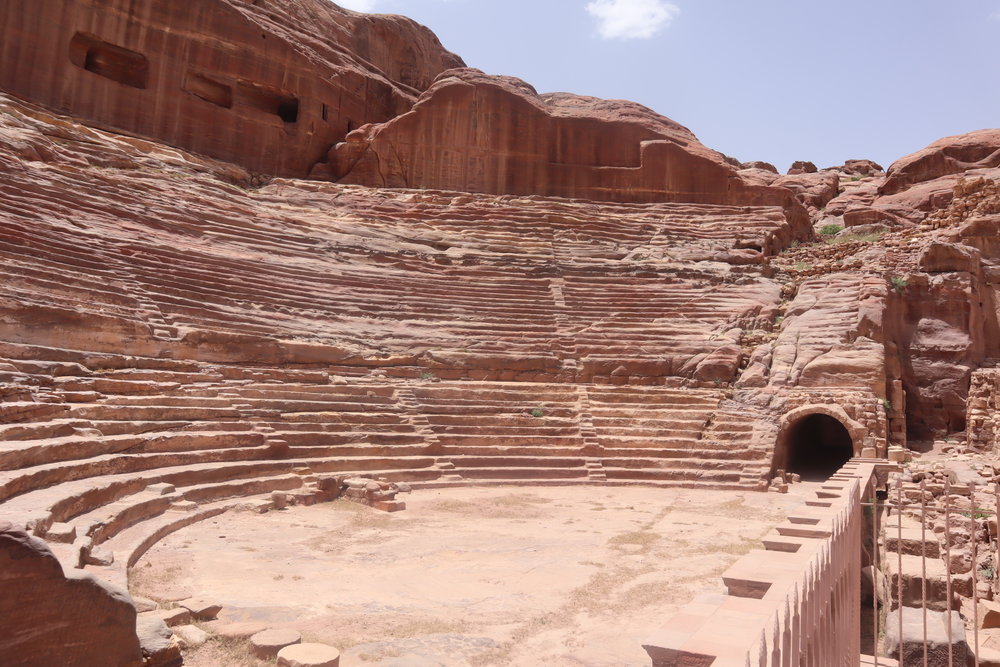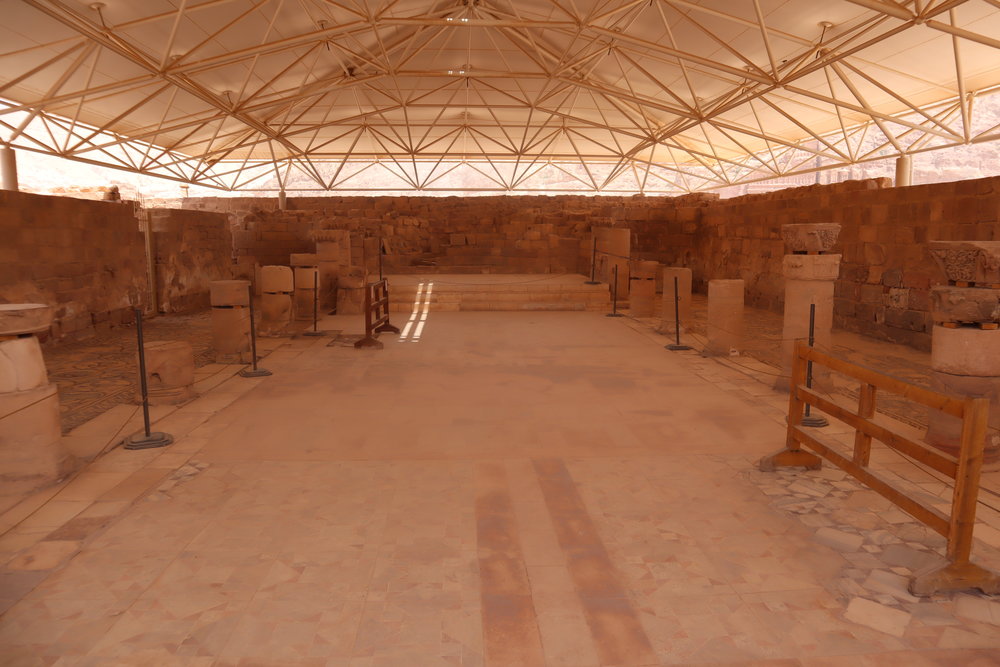After spending our first day in Jordan at the Amman Citadel and the Dead Sea, we were set to continue our journey south, first to Petra and then to Wadi Rum, undoubtedly two of the country’s standout attractions.
As I had touched upon in the previous post, we decided to get around using public transport in a land where most tourists either hire a driver or rent a vehicle of their own, which made our itinerary rather inflexible.
There’s only one scheduled bus service from Amman to Petra, operated by the JETT bus company, which departs at 6:30am in the morning. Ordinarily we would’ve liked to have an easier morning in Amman, but the early-morning bus departure meant that we were checking out of the W Amman and heading to the JETT bus station at the crack of dawn.
After catching up on sleep onboard the bus, we arrived at Petra’s main bus station at around 10:30am. A round-trip taxi ride brought us to and from the Marriott Petra, where we dropped our stuff off and then headed back to Petra to begin our visit of the ancient site.
Admission to Petra is is where the Jordan Pass, which we had purchased for 70 JD ($131) per person and included a Jordan visa fee waiver as well, really starts to demonstrate its value.
For what it’s worth, without the Jordan Pass, you’d pay 50 JD ($94) for an entry pass that’s valid for one day, 55 JD ($103) for two days, and 60 JD ($112) for three days. Clearly there’s pretty good value in purchasing the Jordan Pass to get a visa waiver (which is valid if you’re staying in the country for four nights or more) and access to all of Jordan’s other landmarks as well.

Petra, Jordan – Visitor’s centre
Visiting Petra
Petra Archaeological Park essentially consists of one long walking trail, and visitors can choose how much of the trail they want to conquer.
Making it down to the world-famous sites of the Siq and the Treasury are obviously non-negotiable, but beyond that, only the more dedicated travellers (or those who are happy to pay for horseback rides) choose to climb all the way out to the Monastery, the other iconic rock-cut building on the furthest northwestern edge of the ancient site.

As Jessy and I made our way down to the Siq in the sweltering heat, several enterprising locals tried to offer us horseback rides, which we profusely declined. Some even tried to tempt us with the offer of a “free” horseback ride (yeah right…)
As I’ve mentioned before, I did feel throughout the trip as though Jordanians were pretty industrious about squeezing money out of the many tourists that enter their borders every year, and this was just the latest example.

Petra, Jordan – Walking trail to the Siq
After 10 minutes or so of walking through the desert sand, the landscape started to grow more and more dramatic. The pink bouldery landscape around us slowly grew into large cliffs with narrow valleys…



Petra, Jordan – Entrance to the Siq
…until we turned a corner and found ourselves within the Siq, the instantly recognizable passageway that serves as main entrance to the ancient Nabatean city.
The sunlight, which had peppered us relentlessly over the course of the visit so far, suddenly disappeared beyond the narrow gorge, and as Jessy and I made our way through the shadowy pathway, we could just about make out the image of the spectacular rock-cut monument that lay immediately beyond.
And wow, what an incredible feeling it was to finally lay my own eyes upon Al-Khazneh, or the Treasury, Petra’s most ornate and most well-known structure, carved elaborately out of the sandstone rock face by the ancient Nabateans in honour of King Aretas IV in the 1st century AD.

Petra, Jordan – The Treasury
The Treasury is truly a sight to behold. The ancient temple is an ostentatious piece of work by anyone’s standards today, let alone 2,000 years ago in the time of the Nabateans. It was certainly unlike anything else I had seen before.
Despite having stood for millennia, I thought that its signature dusty pink appearance gave it an air of fragility, its columns resembling pieces of chalk that could crumble at any second. Indeed, in the interest of conservation, tourists are not permitted to approach the front of the facade too closely, let alone enter the interior of the Treasury.
Jessy and I climbed to the higher vantage points opposite the Treasury for a better view of the 45-meter-tall structure. These rocky trails have been blazed rather haphazardly by the millions of tourists who came before you, so you should exercise caution when climbing up, especially as you go higher and higher.
To neither of our surprise, a handful of enterprising Jordanian children had stationed themselves at one of the highest viewing platforms, charging people 1 JOD to enjoy the view from up there. Some tourists reluctantly paid the toll, while others paid the children no mind and brusquely ambled their way past them. For our part, we were content to take in the view from the vantage point just slightly below.
View this post on Instagram
After looking at the Treasury in all its glory and poring over every minute detail of the stonework – from the Hellenistic sculptures adorning the upper level, to the ornate insignia sculpted into the banner above the main entryway – we continued our exploration of the rest of the Petra site.
Admittedly, though, the afternoon heat was starting to get a little overbearing, and Jessy and I both agreed that we didn’t have enough in the tank to make it all the way out to the Monastery, Petra’s second most-visited monument located way out at the boundary of the park.

Petra, Jordan – Continuing along the trail


Supposedly, the Monastery dazzles visitors with the same elaborate beauty as the Treasury, but with a fraction of the people crowded in front of it, so our decision to succumb to the heat and skip it entirely turned out to be one of the regrets I carry from this Jordan trip. I certainly hope to arrive more well-prepared for the long hike through Petra Archaeological Park if I return in the future.
Instead, we toured the ancient amphitheatre and the Byzantine church, which was one of Petra’s more well-preserved structures, featuring detailed mosaics on the ground that served as yet another example of the ancient Nabateans’ artistic and creative sensibilities.

Petra, Jordan – Ancient amphitheatre

Petra, Jordan – Byzantine Church
Then, we turned back and made our way back along the main path, although not without spending another 15 minutes or so at the Treasury to commit its beautiful sandstone facade to memory. No doubt I felt a tinge of wistfulness as we headed back into the shadowy Siq and uphill to the visitor’s centre…

Petra, Jordan – The Treasury

Petra, Jordan – Returning via the Siq
…but then I remembered that this building had been sitting there motionlessly for the past 2,000 years, so it’ll be there all the same in however many years’ time when I return.
How Long Should You Spend in Petra?
As a result of our rather inflexible travel schedule through Jordan, we only had one day in Petra, and I think it’s fair to say that it felt a little rushed. I would’ve appreciated being able to visit Petra the next morning as well to view the Treasury up close with fewer crowds in the way, and also to have the benefit of a full tank of energy for the hike out all the way to the Monastery and the viewing of the thrice-weekly Petra by Night light show.
One of the enduring lessons I’ve learned from my trip in Jordan is that sometimes it’s better to just pay for stuff and get a better experience out of it, even if the price feels a little too expensive or a bit of a rip-off. Hiring a driver for around US$500 all-in, for example, would’ve probably made our already enjoyable time in this beautiful country a significantly more comfortable experience.
The most potent demonstration of this lesson was yet to come, however, onboard the unofficial once-daily tourist bus from Petra down to Wadi Rum. That’s where we’ll pick up in the next installment.
Conclusion
Petra is one of the new seven wonders of the world, and I’m so happy to have had the opportunity to feast my eyes upon the impressive craftsmanship of the ancient Nabateans. Along with Wadi Rum, it’s an absolute must-visit when you’re in Jordan and indeed all of the Levant region, and I have no doubt I’ll be returning at some point in the future to fully experience what I had missed out on this time around.






